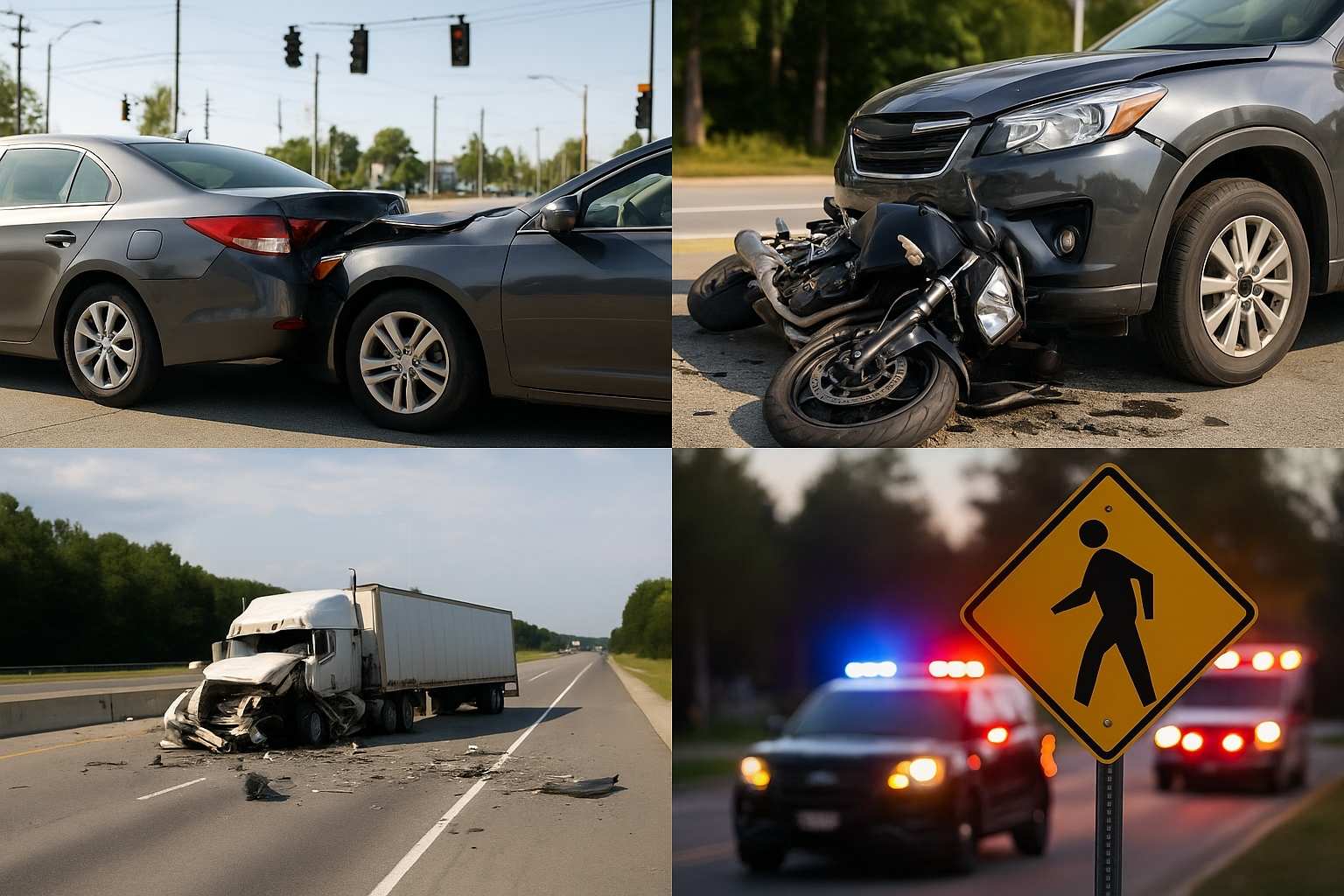Every year in the United States, over 6 million motor vehicle crashes are reported to police and analyzed by federal agencies according to the NHTSA’s overview of crash data systems. But while the number of injuries is staggering, what’s often overlooked is how different each accident and each claim can be.
Whether you're involved in a fender bender, a serious highway crash, or struck while walking across the street, the type of accident you were involved in plays a major role in how your claim is handled, which insurance policies apply, what documents are required, and how compensation is calculated.
This page outlines the most common accident claim categories in the U.S., what makes each one unique, and how to take the right steps to recover physically, financially, and legally.

Unfortunately, based on your response, you may not qualify to file a claim. Most personal injury cases must be filed within two years of the accident, in accordance with the statute of limitations. Please consult with a licensed attorney to explore any possible exceptions or additional options.
Car accidents make up the largest category of motor vehicle accident claims in the U.S. But just because they’re common doesn’t mean they’re easy. Many victims assume fault will be obvious, the insurance will cooperate, and they'll receive fair compensation, yet that's rarely the case.
In most U.S. states, determining fault is the first major hurdle. If you're in a fault-based state, the driver who caused the accident is liable. But proving fault can be tricky, especially in intersection collisions or multi-vehicle pileups. If you're in a no-fault state, like Florida or Michigan, your own insurance (via PIP) covers your injuries regardless of who caused the crash up to a certain limit.
Your success depends on strong documentation: photos of the scene, a police report, medical records, repair estimates, and consistent medical follow-up. You’ll also need to navigate communication with the insurance adjuster, who’s trained to minimize your payout.
Learn how to file and win a claim in our dedicated guide: how car accident claims work in the U.S.
Motorcyclists are 4x more likely to be injured and 29x more likely to be killed in an accident than passengers in cars, according to U.S. federal data. But despite the higher injury rate, motorcycle accident victims often face an uphill battle when filing insurance claims.
Insurance companies often hold biased assumptions against motorcyclists, unfairly assigning fault or questioning the legitimacy of their injuries. Riders also face unique medical challenges, like traumatic brain injuries, road rash, and compound fractures which require long-term treatment and higher claim values.
Helmet laws, lane-splitting laws, and varying liability rules by state all impact your claim. In states like California, where lane-splitting is legal, proving the other party’s fault becomes even more nuanced.
Read our complete breakdown: how to file a motorcycle accident injury claim.
When a commercial vehicle or semi-truck causes a crash, the consequences are usually catastrophic. These accidents often involve serious injury or death and complex legal scenarios.
Truck drivers and their employers are governed by federal law (FMCSA), which means your claim may involve not just one driver but also:
A trucking company
A maintenance provider
A shipping company
An insurance carrier with deep legal teams
You’ll need to examine driving logs, black box data, rest period compliance, and cargo weight limits, all of which are far beyond the scope of a typical car accident claim.
Because trucking companies are heavily insured, payouts can be high but only if liability is clear. These companies fight hard to protect their reputation and minimize settlements.
Learn what steps to take after a truck collision: filing a commercial truck accident claim.
If you were struck while walking, jogging, or cycling, your injuries may be severe, and your ability to provide evidence may be limited. But that doesn’t mean you don’t have a strong claim.
In many states, the at-fault driver’s insurance covers injuries to cyclists and pedestrians. However, if they flee the scene or don’t carry enough insurance, you may also be able to file under your own uninsured/underinsured motorist coverage (UM/UIM).
Comparative negligence rules in your state may also impact your settlement. Some states reduce compensation if the pedestrian is partially at fault.
Learn more: filing a bicycle or pedestrian accident injury claim.
Many valid accident claims don’t fall under standard car, motorcycle, or truck categories. These include:
Delivery vehicle crashes (Amazon, FedEx, DoorDash)
ATV or e-scooter injuries
Rental vehicle accidents
Parking lot crashes
Crashes involving municipal or government vehicles
Each of these may follow different rules, liability structures, and insurance limits.
See examples and what qualifies: how to handle less common accident claims.
Motor vehicle accident claims in the U.S. are governed at the state level. That means your claim’s success can depend on:
Whether you’re in a fault or no-fault state
The state’s comparative negligence rules
The statute of limitations for injury and property claims
Local minimum insurance coverage requirements
Learn more about deadlines and rules in your state: time limits for filing an accident claim.
If you’re unsure what kind of claim you have or who should be paying, it’s best to talk to a professional early. At MVAClaim.com, we review your accident details, determine the right claim path, and connect you with a qualified attorney in your state.
Your consultation is completely free, and you don’t pay unless they win.
Unfortunately, based on your response, you may not qualify to file a claim. Most personal injury cases must be filed within two years of the accident, in accordance with the statute of limitations. Please consult with a licensed attorney to explore any possible exceptions or additional options.